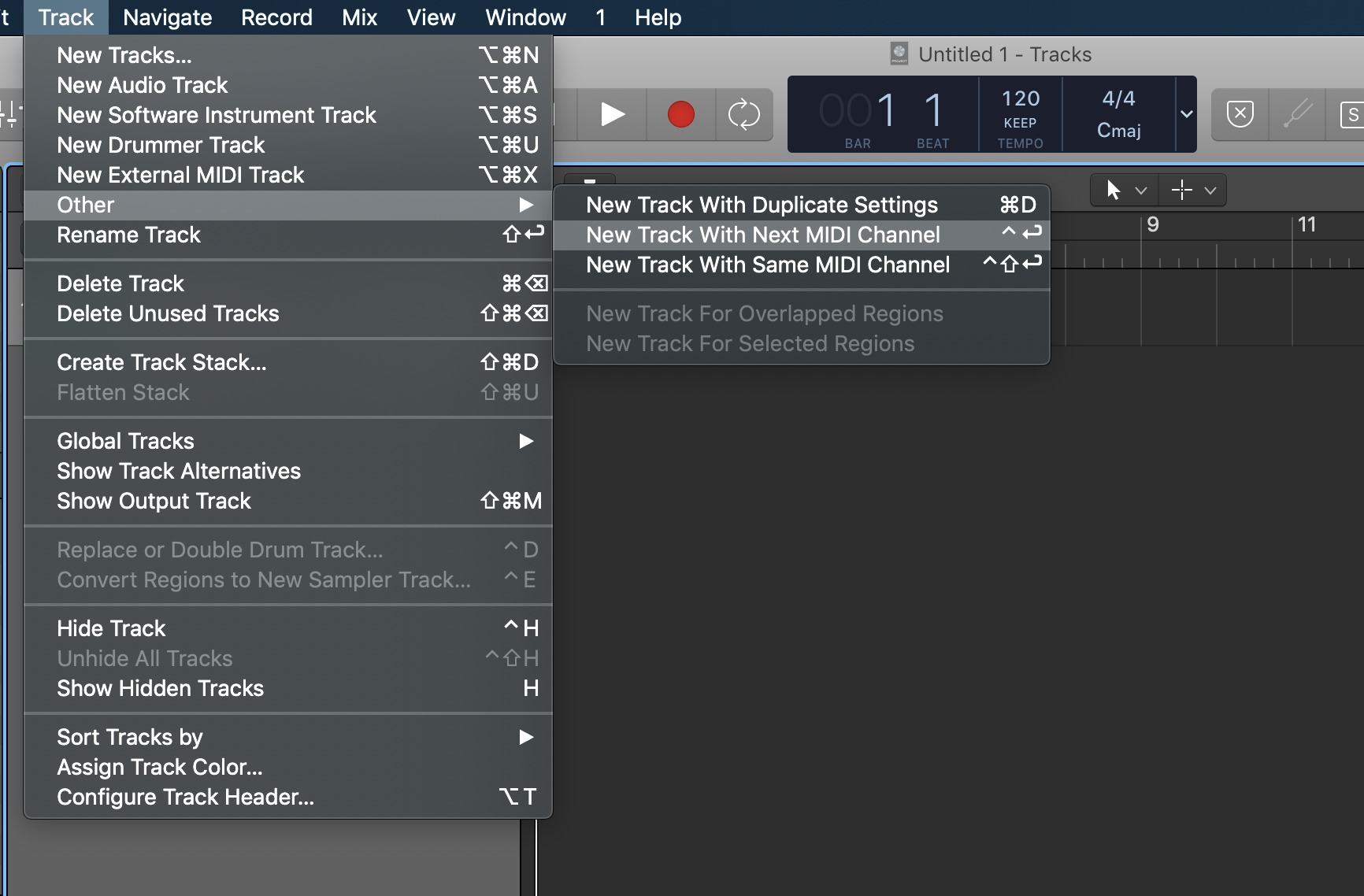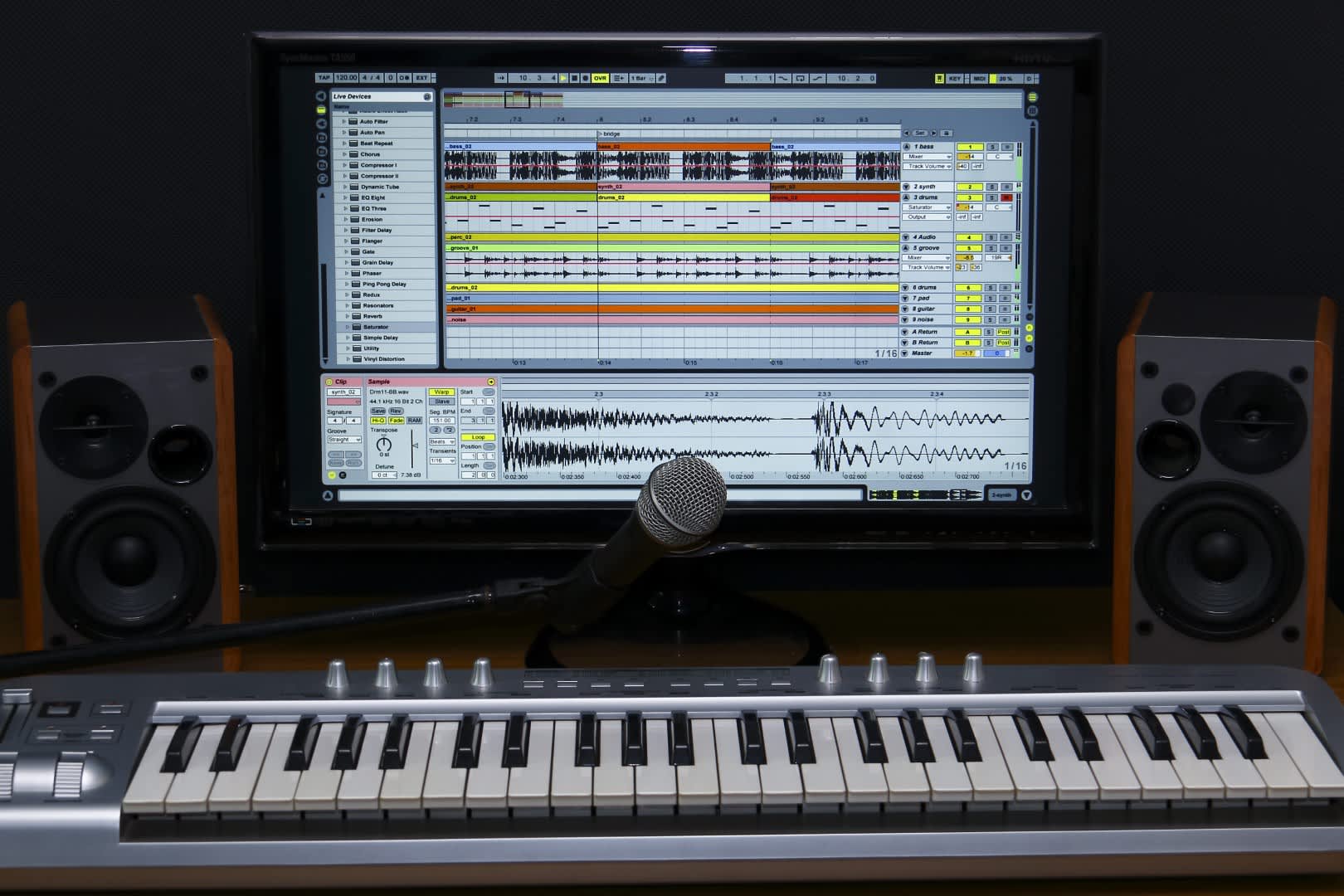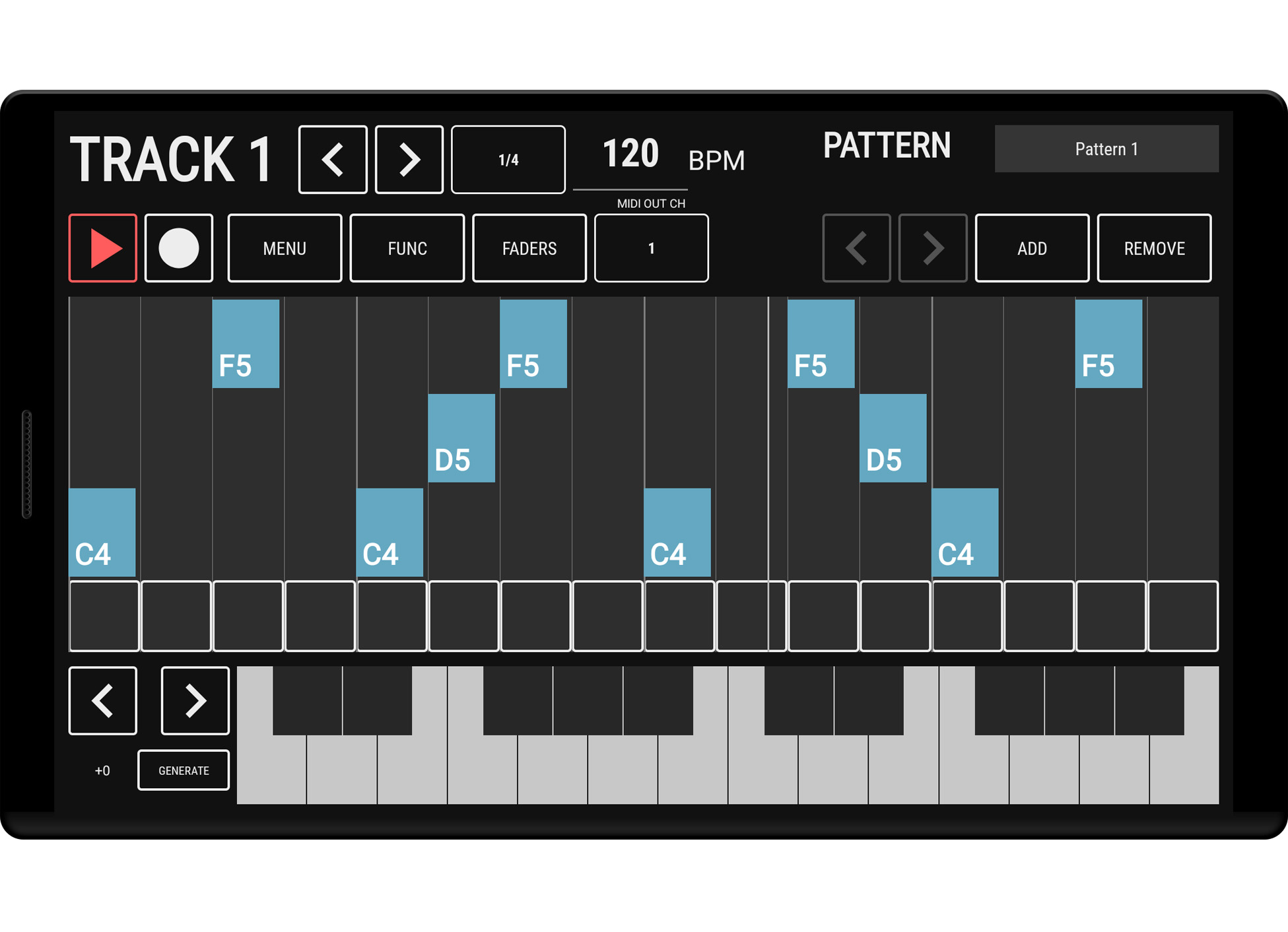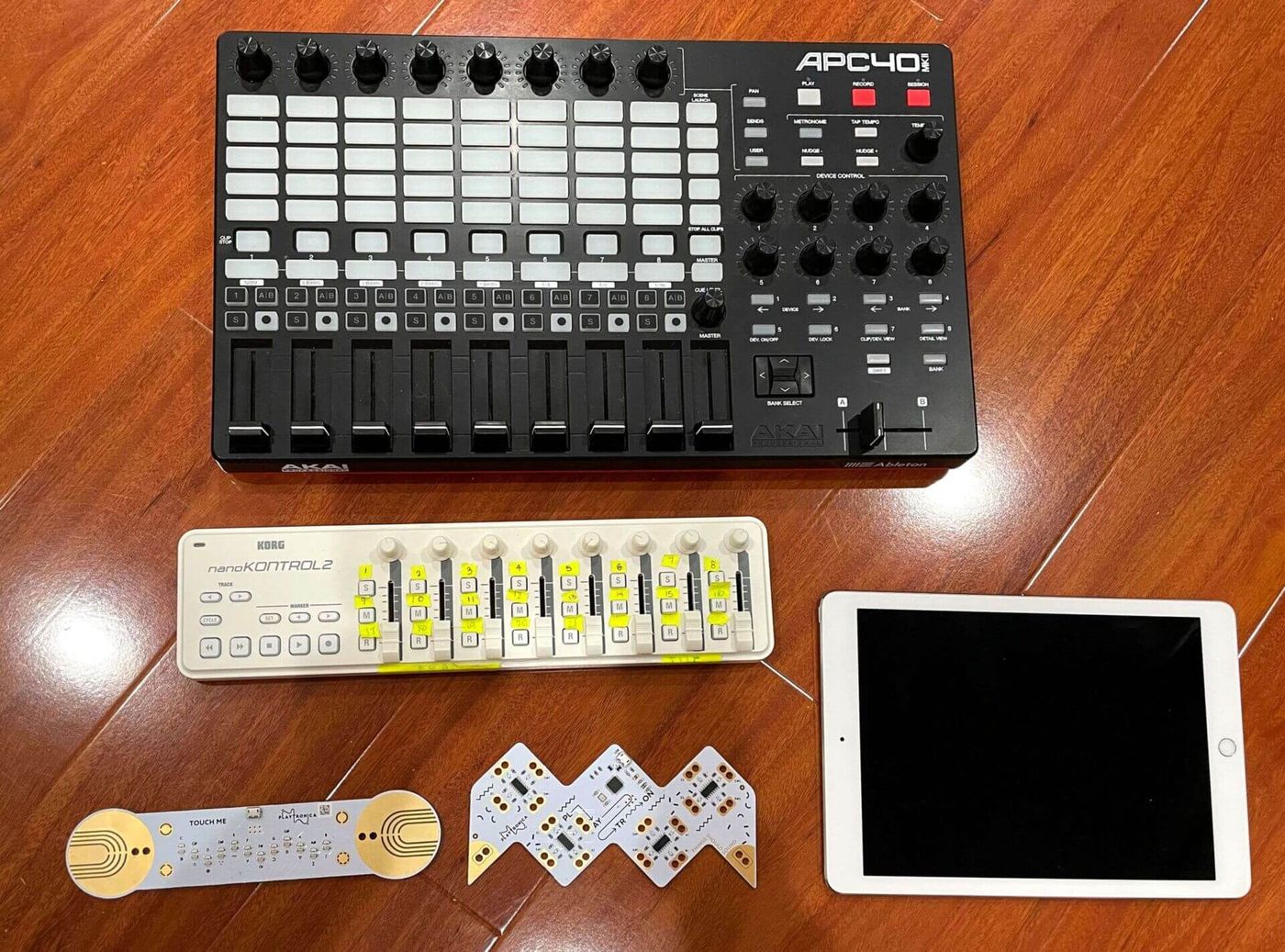Home>Production & Technology>MIDI>What Is A MIDI Sequencer?


MIDI
What Is A MIDI Sequencer?
Published: February 19, 2024
Discover the functionality and benefits of MIDI sequencers. Learn how MIDI technology revolutionizes music production and composition. Explore MIDI sequencers now!
(Many of the links in this article redirect to a specific reviewed product. Your purchase of these products through affiliate links helps to generate commission for AudioLover.com, at no extra cost. Learn more)
Table of Contents
Introduction
In the realm of music production and composition, MIDI sequencers play a pivotal role in shaping and refining musical masterpieces. These digital tools are the unsung heroes behind the scenes, orchestrating the intricate dance of musical notes and commands. As we embark on this journey to unravel the mysteries of MIDI sequencers, we will delve into the very essence of MIDI, understand the inner workings of these powerful tools, explore their diverse types, and uncover the myriad benefits they offer to musicians and producers alike.
MIDI sequencers are the backbone of modern music production, serving as the digital maestros that bring musical ideas to life. Whether you're a seasoned producer crafting complex symphonies or an aspiring musician sketching out your first composition, understanding the intricacies of MIDI sequencers can elevate your creative endeavors to new heights.
Let's embark on this adventure to demystify the world of MIDI sequencers, unearthing their capabilities, unraveling their inner workings, and discovering the myriad ways in which they empower musicians and producers to unleash their creativity.
What is MIDI?
MIDI, which stands for Musical Instrument Digital Interface, is a universal protocol that allows electronic musical instruments, computers, and other devices to communicate, control, and synchronize with each other. It serves as the common language through which various musical components, such as keyboards, synthesizers, drum machines, and computers, can interact seamlessly, enabling musicians and producers to create, record, and manipulate musical compositions with remarkable flexibility and precision.
At its core, MIDI does not transmit audio signals; rather, it transmits a series of digital messages that convey information about musical notes, dynamics, pitch, tempo, and control signals. This digital data encompasses a wide array of musical parameters, including note-on and note-off commands, velocity, pitch bend, modulation, and more, providing a comprehensive framework for transmitting and interpreting musical instructions.
One of the key advantages of MIDI is its versatility and compatibility across different devices and platforms. Whether you're using a vintage synthesizer from the 1980s or a state-of-the-art digital audio workstation (DAW) on a modern computer, MIDI enables seamless connectivity and communication between these disparate technologies. This interoperability empowers musicians and producers to integrate a diverse range of musical instruments and equipment into their creative workflows, fostering boundless opportunities for sonic exploration and innovation.
Moreover, MIDI serves as the foundation for intricate musical arrangements and performances, allowing musicians to layer multiple tracks, control various parameters in real time, and precisely synchronize different musical elements. This level of control and precision is instrumental in shaping the nuances of a musical composition, from subtle articulations and expressive phrasing to elaborate orchestrations and complex rhythmic patterns.
In essence, MIDI serves as the connective tissue that binds together the disparate elements of the modern music production landscape, enabling seamless communication, control, and synchronization across a myriad of musical devices and technologies. Its universal appeal, coupled with its robust capabilities, has solidified MIDI as an indispensable tool for musicians, producers, and audio engineers, serving as the backbone of contemporary music creation and performance.
What is a MIDI Sequencer?
A MIDI sequencer is a pivotal component of the modern music production landscape, serving as a digital canvas upon which musical ideas are meticulously crafted, arranged, and refined. At its core, a MIDI sequencer is a software or hardware device that enables musicians and producers to record, edit, and playback MIDI data, thereby facilitating the creation and manipulation of musical compositions with unparalleled precision and flexibility.
In essence, a MIDI sequencer functions as a virtual recording studio, capturing the intricate tapestry of musical notes, dynamics, and expressive nuances inherent in a musical performance. Whether it's capturing the delicate keystrokes of a grand piano, the pulsating rhythms of a drum machine, or the ethereal textures of a synthesizer, a MIDI sequencer serves as the conduit through which these diverse musical elements converge and intertwine.
Moreover, a MIDI sequencer empowers users to exert meticulous control over every facet of a musical composition, from the timing and duration of individual notes to the intricate interplay of various musical layers. This level of granular control enables musicians and producers to sculpt their sonic visions with unparalleled precision, refining every musical nuance to perfection.
In the digital realm, MIDI sequencers have evolved from standalone hardware units to sophisticated software applications integrated within digital audio workstations (DAWs). These software-based sequencers offer a myriad of advanced features, including robust editing capabilities, virtual instrument integration, and seamless synchronization with external hardware, thereby providing a comprehensive platform for music creation and production.
Furthermore, MIDI sequencers play a pivotal role in facilitating the seamless integration of virtual instruments and sample libraries, allowing users to harness a vast array of sonic palettes and timbres within their compositions. Whether it's orchestrating symphonic arrangements, sculpting electronic soundscapes, or crafting intricate beats, MIDI sequencers serve as the cornerstone of creative expression in the digital age.
In essence, a MIDI sequencer is not merely a tool for recording and playback; it is a dynamic canvas upon which musical ideas are brought to life, enabling musicians and producers to unleash their creativity and realize their artistic visions with unparalleled depth and sophistication. As we delve deeper into the realm of MIDI sequencers, we will uncover the intricate mechanisms through which these digital marvels operate, exploring their diverse types, features, and the myriad benefits they offer to the creative community.
This section provides a comprehensive overview of the MIDI sequencer, shedding light on its pivotal role in modern music production and its transformative impact on the creative process. With a firm grasp of the fundamental principles underlying MIDI sequencers, we are poised to embark on a deeper exploration of their inner workings and the myriad ways in which they empower musicians and producers to push the boundaries of sonic innovation.
How Does a MIDI Sequencer Work?
A MIDI sequencer operates as a sophisticated digital orchestrator, intricately weaving together the fabric of musical compositions with remarkable finesse and precision. At its core, the functioning of a MIDI sequencer revolves around the meticulous recording, editing, and playback of MIDI data, enabling users to sculpt and refine musical arrangements with unparalleled control and flexibility.
When a musician or producer engages with a MIDI sequencer, they embark on a journey of musical exploration, leveraging the software's intuitive interface to input, manipulate, and arrange MIDI data. This process begins with the recording of MIDI information, which may encompass a diverse array of musical elements, including note-on and note-off commands, velocity, pitch bend, modulation, and control signals. As these digital messages are captured by the sequencer, they form the building blocks of a musical composition, laying the foundation for intricate sonic tapestries to unfold.
Once the MIDI data is captured, the sequencer provides a canvas for users to engage in precise editing and manipulation. Whether it involves adjusting the timing of individual notes, refining the dynamics of a musical passage, or layering multiple tracks to create lush harmonies, the sequencer empowers users to sculpt their musical visions with unparalleled granularity. This level of control extends to the manipulation of tempo, time signature, and musical phrasing, enabling users to shape the ebb and flow of a composition with remarkable precision.
As the edited MIDI data takes shape, the sequencer facilitates seamless playback, allowing users to experience their compositions in real time. This playback functionality serves as a critical tool for evaluating the musical arrangement, identifying areas for refinement, and immersing oneself in the sonic landscape being crafted. Moreover, the sequencer's playback capabilities extend beyond mere observation, offering users the ability to experiment with different musical variations, explore alternative arrangements, and fine-tune every aspect of the composition until it resonates with artistic satisfaction.
In essence, a MIDI sequencer operates as a digital conduit through which musical ideas are captured, refined, and brought to life. Its intricate workings empower musicians and producers to engage in a dynamic dialogue with their compositions, shaping every musical nuance and expressive gesture with unparalleled finesse. As we continue our exploration of MIDI sequencers, we will uncover the diverse types and features that define these digital marvels, shedding light on the myriad ways in which they empower creative expression in the realm of music production and composition.
Types of MIDI Sequencers
MIDI sequencers come in various forms, each tailored to meet the diverse needs and preferences of musicians and producers. Understanding the different types of MIDI sequencers is essential for navigating the expansive landscape of music production tools and selecting the most suitable platform for one's creative endeavors.
-
Hardware MIDI Sequencers: These standalone devices are dedicated to the task of sequencing MIDI data, offering a tactile and intuitive interface for recording, editing, and playing back musical compositions. Hardware MIDI sequencers often feature a robust array of physical controls, such as knobs, faders, and buttons, providing a hands-on approach to music creation and performance. Additionally, these devices may integrate seamlessly with external MIDI instruments and equipment, serving as the central hub for orchestrating complex musical arrangements.
-
Software-Based MIDI Sequencers: In the digital realm, software-based MIDI sequencers have emerged as powerful tools within digital audio workstations (DAWs) and standalone music production software. These versatile applications provide a comprehensive platform for recording, editing, and manipulating MIDI data, offering a myriad of advanced features such as piano roll editors, event lists, and automation controls. Software-based MIDI sequencers often integrate seamlessly with virtual instruments and sample libraries, allowing users to harness a vast array of sonic palettes within their compositions.
-
Step Sequencers: Step sequencers represent a unique breed of MIDI sequencers that excel in the realm of pattern-based music creation. These specialized tools enable users to program musical patterns by inputting individual steps, each representing a specific note or event. Step sequencers are particularly well-suited for crafting rhythmic patterns, basslines, and melodic loops, offering a streamlined approach to composition and improvisation.
-
Real-Time MIDI Sequencers: Real-time MIDI sequencers cater to the needs of performers and improvisers, offering a dynamic platform for capturing and manipulating MIDI data in real time. These sequencers enable musicians to engage in live recording and improvisation, allowing for spontaneous exploration and expression within a musical context. Real-time MIDI sequencers often feature responsive interfaces and performance-oriented controls, empowering musicians to shape their compositions on the fly.
-
Hybrid MIDI Sequencers: Blurring the boundaries between hardware and software, hybrid MIDI sequencers combine the tactile immediacy of hardware devices with the expansive capabilities of software-based platforms. These hybrid solutions offer a seamless integration of physical controls and digital workflows, providing a versatile environment for music production and performance. Hybrid MIDI sequencers often appeal to users seeking a balanced fusion of hands-on control and digital flexibility.
By exploring the diverse landscape of MIDI sequencers, musicians and producers can identify the most suitable platform for their creative pursuits, harnessing the power of these digital marvels to bring their musical visions to fruition. Each type of MIDI sequencer offers a unique set of features and capabilities, catering to a broad spectrum of artistic preferences and workflow requirements. As we continue our exploration, we will delve into the intricate features of MIDI sequencers, shedding light on the myriad ways in which these tools empower musicians and producers to push the boundaries of sonic innovation.
Features of MIDI Sequencers
MIDI sequencers encompass a rich tapestry of features that empower musicians and producers to sculpt, refine, and orchestrate musical compositions with unparalleled precision and creativity. These features form the bedrock of a MIDI sequencer's functionality, offering a comprehensive toolkit for capturing, editing, and manipulating MIDI data. Let's delve into the diverse array of features that define MIDI sequencers, shedding light on the capabilities that underpin their transformative impact on the music production landscape.
-
Multitrack Recording and Editing: MIDI sequencers provide a multitrack environment, allowing users to record and edit multiple layers of MIDI data within a single project. This feature enables the creation of complex musical arrangements, encompassing diverse instruments and musical elements, while offering individual control over each track's parameters, such as timing, velocity, and expression.
-
Piano Roll and Event List Editors: The inclusion of piano roll and event list editors within MIDI sequencers offers intuitive platforms for visualizing and manipulating MIDI note data. These editors provide a graphical representation of musical notes, enabling users to fine-tune note durations, pitches, and velocities with remarkable precision. Additionally, event list editors offer a detailed overview of MIDI events, allowing for granular control over parameters such as pitch bend, modulation, and control changes.
-
Quantization and Groove Templates: MIDI sequencers feature quantization tools that facilitate the alignment of MIDI notes to a rhythmic grid, ensuring precise timing and rhythmic cohesion within musical performances. Furthermore, the inclusion of groove templates enables users to infuse their compositions with diverse rhythmic feels, ranging from tight and precise to loose and organic, thereby enhancing the expressive range of musical arrangements.
-
MIDI Effects and Processing: MIDI sequencers offer a plethora of MIDI effects and processing tools, allowing users to manipulate MIDI data in creative and dynamic ways. These effects may include arpeggiators, chord generators, MIDI CC (control change) manipulation, and advanced routing options, providing endless possibilities for shaping and transforming MIDI compositions.
-
Automation and Control Surface Integration: The integration of automation features within MIDI sequencers empowers users to modulate and control various parameters over time, adding dynamic movement and expression to musical performances. Furthermore, seamless integration with control surfaces and MIDI hardware controllers enables tactile manipulation of MIDI parameters, fostering an immersive and hands-on approach to music production.
-
Scalability and Virtual Instrument Integration: MIDI sequencers accommodate the integration of virtual instruments and sample libraries, allowing users to harness a vast array of sounds and timbres within their compositions. This scalability enables musicians and producers to explore diverse sonic palettes, from orchestral ensembles and electronic synthesizers to exotic world instruments, fostering boundless opportunities for sonic exploration and innovation.
In essence, the rich tapestry of features within MIDI sequencers empowers musicians and producers to navigate the expansive landscape of music production with unparalleled creativity and precision. These features serve as the building blocks of sonic expression, offering a dynamic platform for realizing artistic visions and pushing the boundaries of musical innovation.
Benefits of Using a MIDI Sequencer
The utilization of a MIDI sequencer bestows an array of transformative benefits upon musicians and producers, serving as a catalyst for creative expression, precision, and versatility within the realm of music production. Let's delve into the myriad advantages that stem from harnessing the power of MIDI sequencers, illuminating the profound impact these digital marvels have on the creative process.
Precision and Control
MIDI sequencers empower users to exert meticulous control over every facet of a musical composition, from the timing and duration of individual notes to the intricate interplay of various musical layers. This level of granular control enables musicians and producers to sculpt their sonic visions with unparalleled precision, refining every musical nuance to perfection. By providing a platform for precise editing, manipulation, and real-time playback of MIDI data, sequencers facilitate the realization of intricate musical arrangements with unwavering precision.
Flexibility and Iteration
The inherent flexibility of MIDI sequencers enables users to explore diverse musical ideas, experiment with alternative arrangements, and iterate on compositions with remarkable ease. Whether it involves refining melodic motifs, experimenting with rhythmic variations, or exploring unconventional harmonies, MIDI sequencers provide a dynamic playground for musical exploration and iteration. This flexibility empowers musicians and producers to push the boundaries of sonic innovation, fostering an environment where creative experimentation thrives.
Integration and Compatibility
MIDI sequencers serve as a unifying force within the modern music production landscape, offering seamless integration and compatibility with a diverse array of musical instruments, software, and hardware. This interoperability enables musicians to harness the collective power of disparate musical components, seamlessly integrating virtual instruments, external MIDI hardware, and sample libraries within their creative workflows. By serving as a central hub for musical communication and control, MIDI sequencers foster a cohesive environment for musical collaboration and sonic exploration.
Streamlined Workflow and Productivity
The intuitive interface and comprehensive feature set of MIDI sequencers streamline the music production workflow, enhancing productivity and creative efficiency. Whether it's the seamless multitrack recording and editing capabilities, the integration of MIDI effects and processing tools, or the dynamic control surface integration, MIDI sequencers empower users to navigate the complexities of music production with remarkable ease. This streamlined workflow fosters an environment where creative ideas can flow freely, allowing musicians and producers to channel their artistic visions into tangible musical expressions.
Artistic Expression and Innovation
Above all, MIDI sequencers serve as a conduit for artistic expression and innovation, providing a canvas upon which musical ideas are brought to life with boundless creativity. The transformative capabilities of MIDI sequencers enable musicians and producers to transcend traditional boundaries, explore uncharted sonic territories, and breathe life into their artistic visions. Whether it's crafting intricate symphonic arrangements, sculpting mesmerizing electronic soundscapes, or unleashing the raw energy of rhythmic compositions, MIDI sequencers empower users to push the boundaries of sonic innovation and redefine the landscape of musical expression.
In essence, the benefits of using a MIDI sequencer extend far beyond mere technical functionality, encompassing a profound impact on the creative process and the realization of artistic visions. By embracing the transformative capabilities of MIDI sequencers, musicians and producers embark on a journey of boundless creativity, precision, and sonic innovation, laying the foundation for musical expressions that resonate with depth and authenticity.
Conclusion
In the ever-evolving landscape of music production and composition, MIDI sequencers stand as the unsung heroes, orchestrating the intricate dance of musical notes and commands with unparalleled finesse and precision. As we conclude our exploration of MIDI sequencers, it becomes evident that these digital marvels serve as the bedrock of modern music creation, empowering musicians and producers to unleash their creative potential and push the boundaries of sonic innovation.
At the heart of MIDI sequencers lies a profound commitment to precision, control, and flexibility, offering a dynamic platform for capturing, editing, and orchestrating musical compositions with unwavering precision. The transformative benefits of using MIDI sequencers extend far beyond technical functionality, encompassing a profound impact on the creative process, artistic expression, and the realization of musical visions.
Furthermore, the diverse array of features within MIDI sequencers, including multitrack recording and editing, piano roll and event list editors, quantization and groove templates, MIDI effects and processing, automation, and control surface integration, and virtual instrument integration, collectively form a comprehensive toolkit for navigating the expansive landscape of music production with unparalleled creativity and precision.
As we reflect on the myriad advantages of harnessing the power of MIDI sequencers, it becomes evident that these digital marvels serve as catalysts for creative expression, precision, and versatility within the realm of music production. The seamless integration and compatibility of MIDI sequencers with a diverse array of musical instruments, software, and hardware further solidify their pivotal role as unifying forces within the modern music production landscape.
Ultimately, MIDI sequencers represent more than mere tools for recording and playback; they embody a dynamic canvas upon which musical ideas are brought to life with boundless creativity and innovation. By embracing the transformative capabilities of MIDI sequencers, musicians and producers embark on a journey of boundless creativity, precision, and sonic innovation, laying the foundation for musical expressions that resonate with depth and authenticity.
In essence, MIDI sequencers serve as the digital maestros that empower musicians and producers to realize their artistic visions with unparalleled depth and sophistication, shaping the sonic landscape with boundless creativity and innovation. As we look to the future of music production, MIDI sequencers will continue to serve as the guiding light, illuminating the path toward new frontiers of musical expression and creativity.











